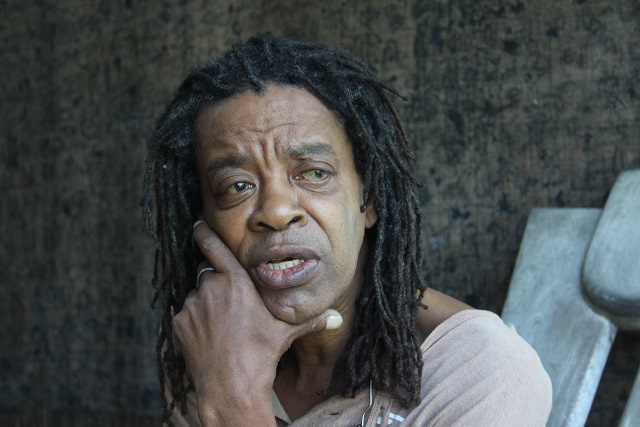Leon Radegonde - Seychelles contemporary artist uses materials which have a story to tell
(Seychelles News Agency) - Discovering his passion for art at the age of seventeen, Seychellois Leon Radegonde is today one of the country’s renowned artist specialising in contemporary art.
Radegonde together with other local artist George Camille recently participated in the 56th Arts Biennale in Venice, Italy.
Although he has acquired quite a following in overseas market especially Germany, France and Italy, Radegonde admits that perhaps the appreciation for contemporary art is still a new concept in Seychelles, and therefore the local market is very limited.
One of the few places in the Indian Ocean island nation to see the work of this Seychellois artist is Passerose Gallery in Cote d’Or on Praslin, the Seychelles’ second populated island.
“Radegonde’s work is sombre, and does not depict the Seychelles scenery, his work is completely abstract and the European clients who acquire his work are those who appreciate the depth of contemporary art,” explains Pierre Harter, the owner of the gallery.
According to Harter, mostly French and German clients purchase Radegonde’s work. He is also well known among German art lovers, as as he presented a solo exhibition in 2011 in Munich, the largest city in Bavaria, Germany.
The artist confirmed to SNA that he is currently working on three pieces for an invited exhibition in Germany.
Radegonde uses the Arte Povera style (meaning poor or impoverished art) which originated from Italy in the 1960’s whereby most of these artists use commonplace materials that can bring a pre-industrial age such as earth, rocks, clothing, paper and rope.
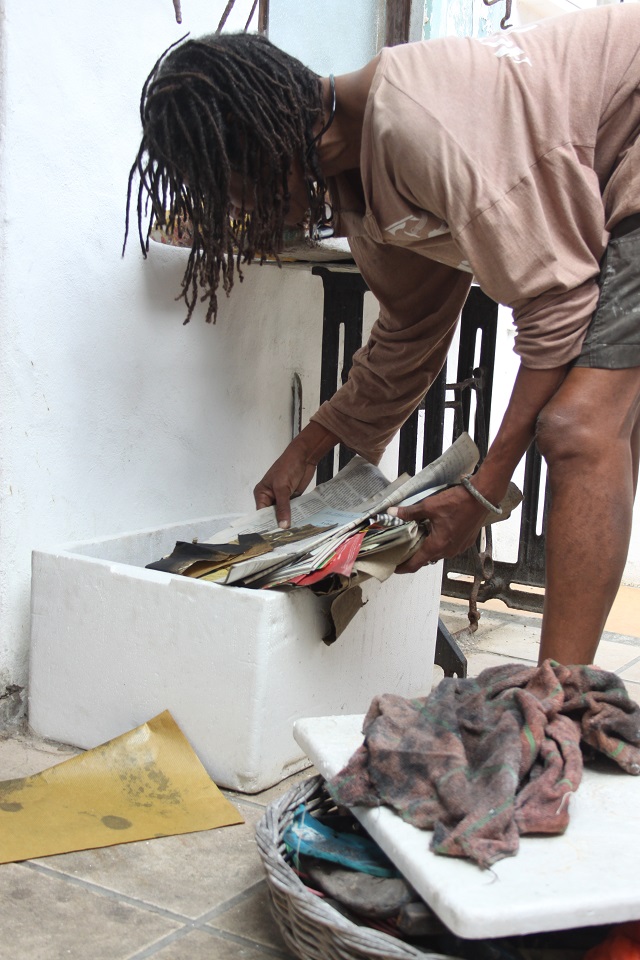 |
| Newspapers are one of the materials key to Radegone's signature work (Joe Laurence, Seychelles News Agency) Photo License: CC-BY |
Using items that have been discarded and being of no further use, like newspapers, Radegonde transforms them into precious pieces with new definitions and meanings.
“I use materials which I believe have a story to tell, they have lived a long life and already have had their own experience,” says Radegonde in an interview with SNA at his home-studio in Machabee, in the north of the main island of Mahe.
“If they have not been transformed by the weather or by people, I transform them and make it look as if I just picked them up from somewhere in nature.”
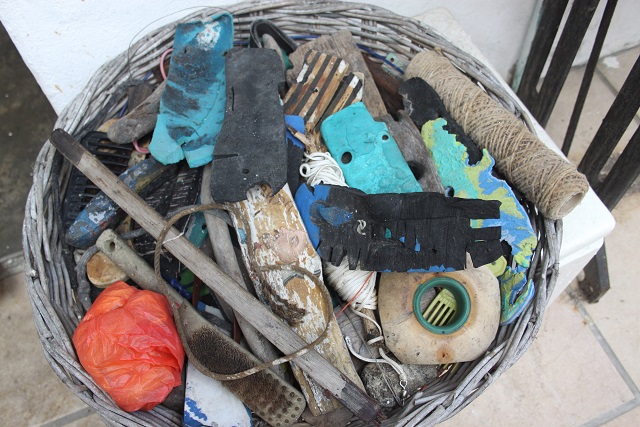 |
| Not a bin full of trash, but a chest full of treasures for the artist's imagination (Joe Laurence, Seychelles News Agency) Photo License: CC-BY |
Radegone expects people to view his art and then interpret and appreciate it themselves, without giving away his intentions.
Exploring the world of Leon Radegonde
Going down the steps to Radegonde’s home-studio, every piece along the way tells their own story and shows that the artist and his creation are but one entity.
The objects found and salvaged by the artist have been altered into beautiful and complex pieces bringing out the memories of an ancient time.
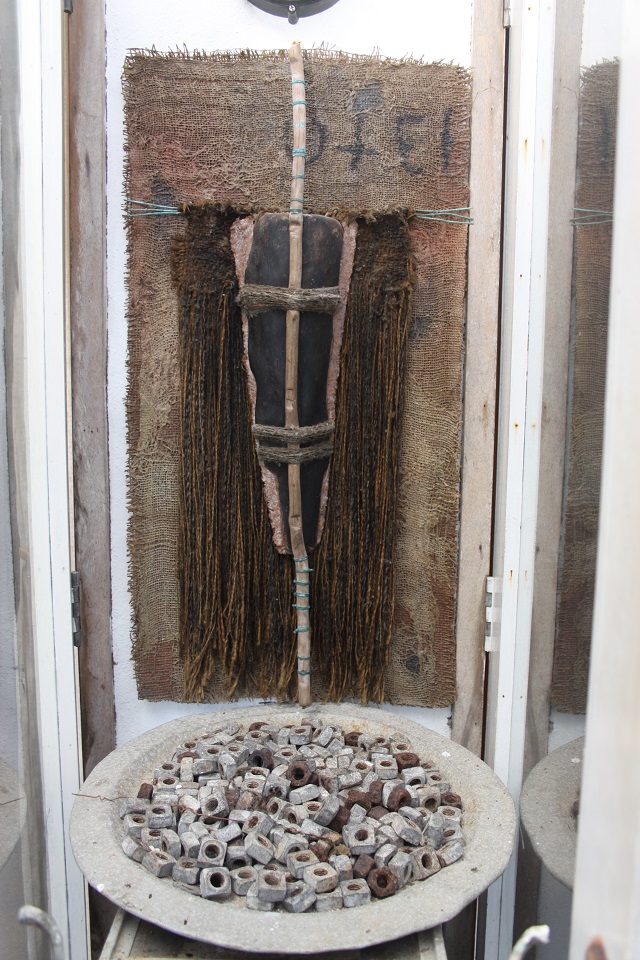 |
| The old and the new are merged (Joe Laurence, Seychelles News Agency) Photo License: CC-BY |
The items such as the time-worn, dilapidated, painted wooden windows of colonial buildings, hanging on the wall aside the modern window brings to attention the contrast between the old and the new.
 |
| Remnants of a bygone era (Joe Laurence, Seychelles News Agency) Photo License: CC-BY |
Below them a bended iron frame, the remnants of a chair, and a dilapidated rudder converted into a seat, greet the visitor walking through the remants of history and modernity.
The décor and furniture are re-cycled materials similar to the ones he uses in his art work.
The spacious studio shows Radegonde’s work in progress with all his tools that help perfect his techniques and create his extraordinary pieces.
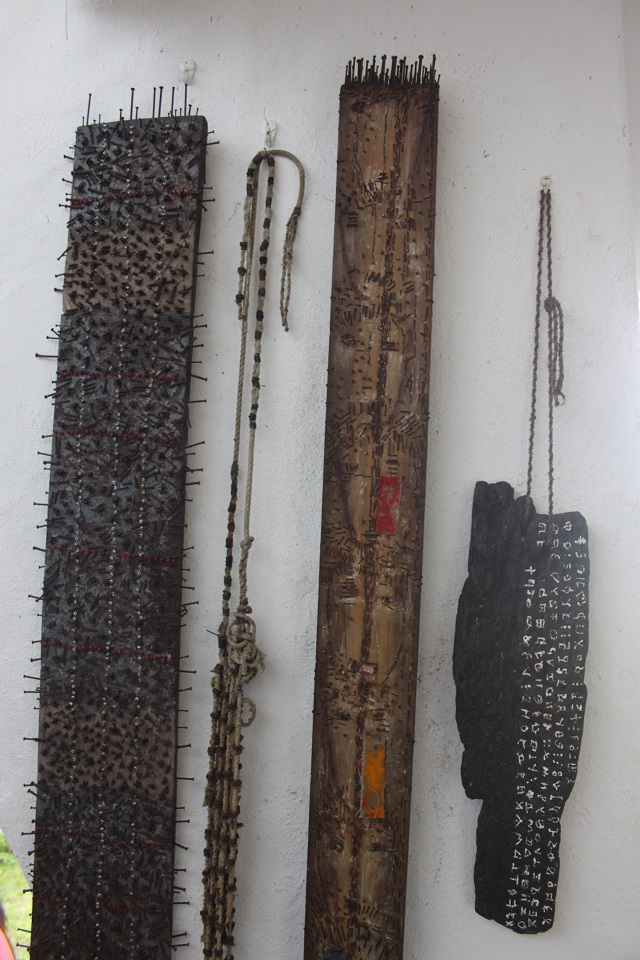 |
| Signs and symbols for a new meaning to art (Joe Laurence, Seychelles News Agency) Photo License: CC-BY |
The bench stools at his kitchen bar bring back memories of his primary school years. The tiny iron chairs which are not easily seen in Seychelles today live on in Radegonde’s home, now with long iron legs bringing them into modern times.
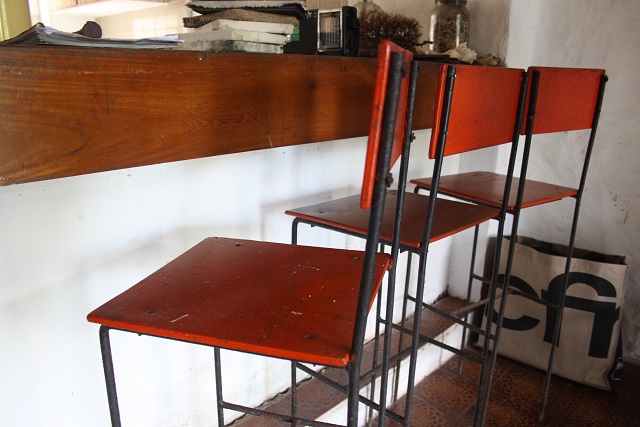 |
| A glimpse of the past at the artist's home. (Joe Laurence, Seychelles News Agency) Photo License: CC-BY |
Radegonde’s walls are stark white and he recalls when he first moved in, how it motivated him to create dark masks to contrast against the white colour.
Aside of turning the old into something new, there is also another side to Radegonde’s creations.
“I tend to give human experiences to the materials I find and work with. There are traces of human faces, and in such, the inspiration is somewhat the answer to the question that I ask myself, where do I come from? I try to answer this question in the way that I work and mostly with the materials that I use,” explains Radegonde.
The artist adds that he tries to create the impression that these pieces have existed for a long time.
“I make it look like I walked through a village and picked up an old piece of wood that I like, and I just signed my name on it, but I make it as if nature did all the work.”
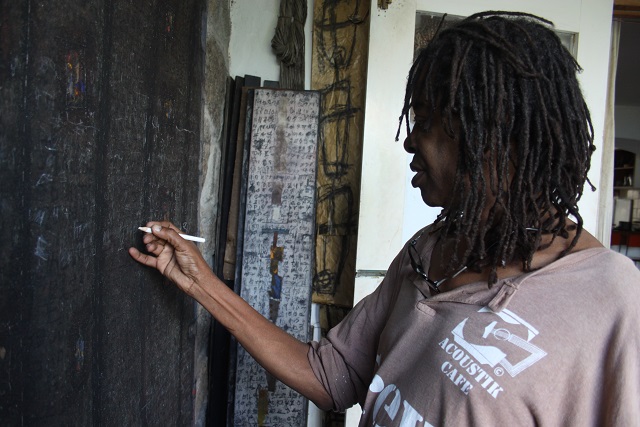 |
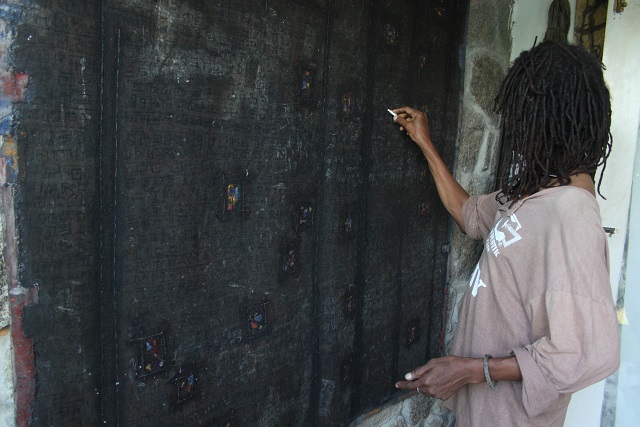 |
| Radegonde at work. (Joe Laurence, Seychelles News Agency) Photo License: CC-BY |
The Seychellois artist says his work is a process of tearing, staining, soaking and dyeing in burnt oil, rust and charcoal until the long labour is over and there lies the finished products.
How it all started for Radegonde
Born on La Digue in 1950, Radegonde spent his early years on this third largest inhabited island of the Seychelles before moving to the main island of Mahé as a teenager to continue his studies.
It was only at the age of 17, while studying at the Seychelles College that he realized that he was interested in art.
The interest stimulated by the constant drawing of a fellow classmate is what Radegonde has today developed into his lifelong passion.
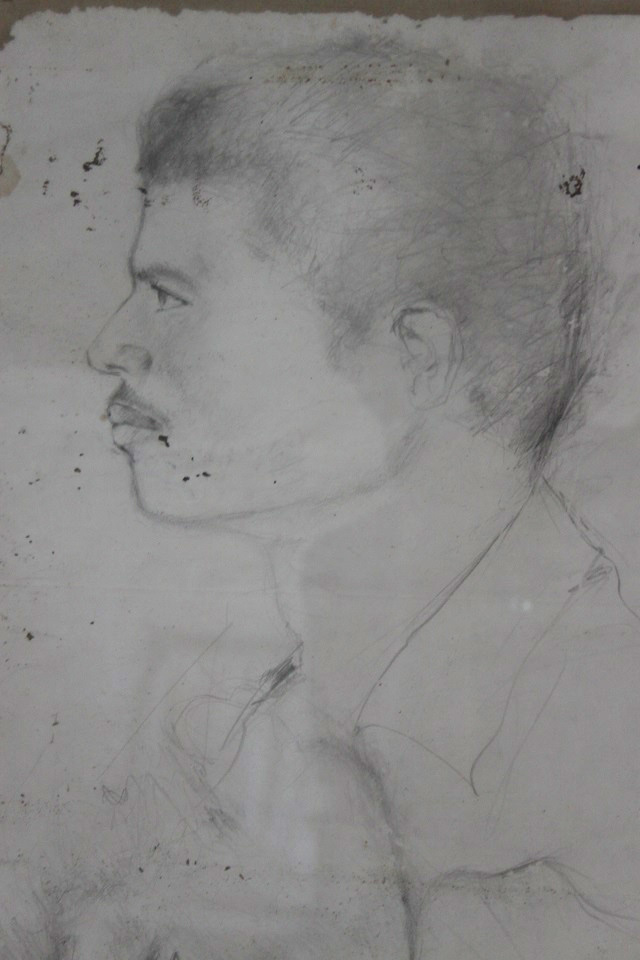 |
| The artists shows his mastery of portraits. (Joe Laurence, Seychelles News Agency) Photo License: CC-BY |
The 65 year old artist gives due recognition to his first art coach Helene Thomas, a visual arts teacher- trainer who Radegonde got to work with while studying to become a French teacher.
“She guided me, when I made my first step in the world of art. These days Art was not in the school curriculum. Thomas took me and former classmates and fellow artist Egbert Marday for Saturday classes,” says Radegonde.
Thomas helped them developed their skills and sit for their Ordinary Level (O’ level) Paper in Art during high school.
Radegonde then mastered his pencil lines by reading art books and went for further studies doing a French degree course in Quebec, Canada. He was at the same time taking evening classes in art.
While training at the University of Newcastle in 1975, he was given the opportunity, to train as an art teacher and the same time completing his training as a French teacher.
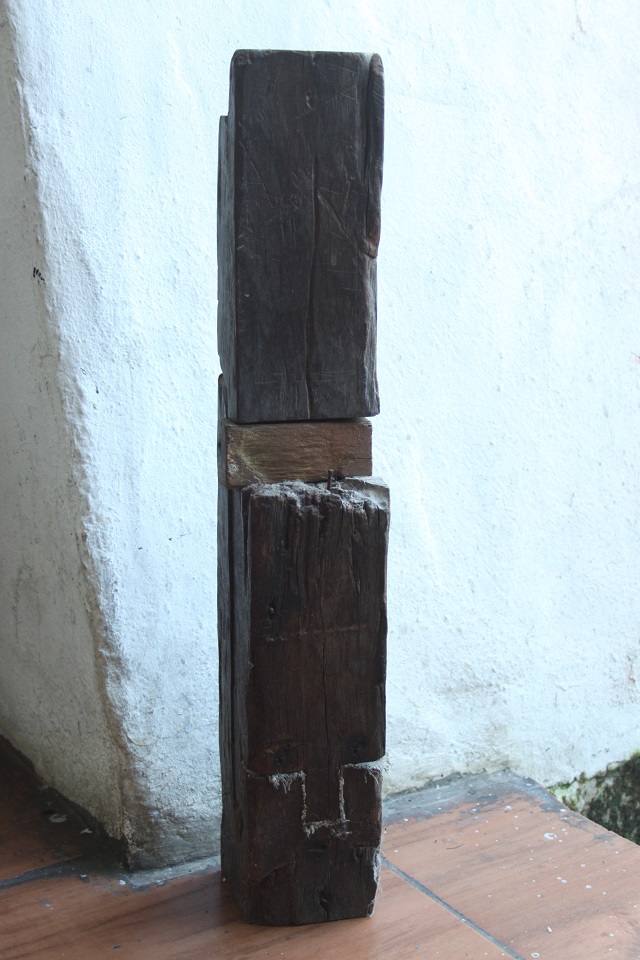 |
| What do you see in this piece? Radegone asks for your interpretation. (Joe Laurence, Seychelles News Agency) Photo License: CC-BY |
Radegonde taught for 12 years and became a cultural administrator with the Seychelles Ministry of Culture for 18 years. It was only in 2003 that he became a full-time artist.
The Seychellois artist says his first inspiration came from the memories of the home he grew up in, and the typical Seychellois homes of his childhood days in the 1950s and 1960s.
During those days there were wallpapers made from old newspapers in the homes as a form of decoration which were then tarnished by insects, the heat of the sun and time giving them new textures, effects and tones.
This is what is depicted in his collage works which merges the old days with the new.
Radegonde says he challenges himself to do what is difficult and to use what is unconventional to work with.
Since the European market of contemporary art invests in very large pieces, now back from the Biennale in Venice, Radegonde admits that he has to challenge himself to produce larger pieces.
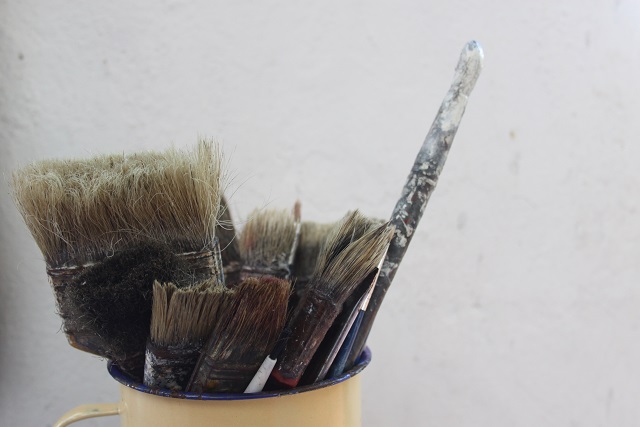 |
| The artist's tools. (Joe Laurence, Seychelles News Agency) Photo License: CC-BY |

